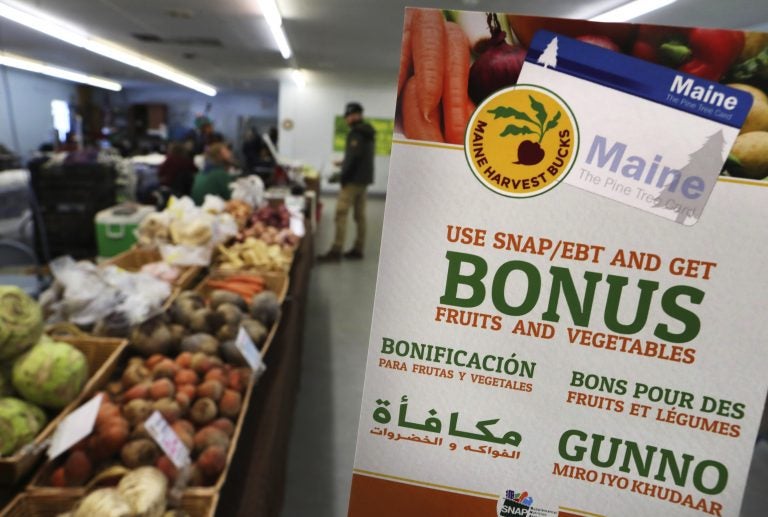Families with immigrant members report doing without food stamps in Philadelphia
Ever since the Trump administration took a tougher stand on immigration policies, service providers report immigrants are avoiding school visits and doctor offices.

In this Friday, March 17, 2017, file photo, a sign advertises a program that allows food stamp recipients to use their EBT cards to shop at a farmer's market. (Robert F. Bukaty/AP Photo)
Ever since the Trump administration took a tougher stand on immigration policies, service providers report immigrants are avoiding school visits, doctor offices and government programs.
New survey data from Children’s Health Watch adds numbers and heft to those anecdotes, in the case of one point of contact — the Supplemental Nutrition Assistance Program, or SNAP, formerly known as food stamps.
Most immigrants, particularly those in the United States for fewer than five years, are not eligible to receive SNAP. Citizens, green-card holders who’ve had that status for five years, refugees, victims of trafficking, people granted asylum, and a few other categories of immigrants may access public benefits.
For all eligible users, food assistance use ticked up from 2008 to 2013, before leveling off.
“Starting in 2018, we begin to see a downward trend,” said Allison Bovell-Ammon, deputy director of policy strategy with Children’s Health Watch. That trend is more extreme in households with at least one immigrant member, “especially among the families with immigrants who have been in the U.S. for less than five years.”
Meanwhile, this same group reported worrying more about how to feed their families.
“We see there’s a chilling effect of people withdrawing from those programs,” said Bovell-Ammon, although she cautioned that the data is preliminary.
Proposed policy changes by the Trump administration may be fueling that fear. In October, federal officials proposed changing the rules on how the use of public benefits would affect immigrants applying for a green card or other adjustments of their legal status. An earlier leaked draft called for penalizing an immigrant if anyone in their household used benefits.
Social service providers say even though that policy is no longer on the table, they fear a ripple effect — that if one person in a household is an immigrant, the whole family will forgo public benefits out of an abundance of caution. More than 16 million U.S. residents belong to a family with at least one member who does not have legal immigration status, according to a 2017 analysis by the University of Southern California Center for the Study of Immigrant Integration and the Center for American Progress.
The immigration status of survey participants is unknown, and their SNAP use is self-reported. For the data on immigrant-headed household SNAP use, the group used surveys of 35,207 caregivers, usually mothers, across five major U.S. cities between 2007 and 2018.
WHYY is your source for fact-based, in-depth journalism and information. As a nonprofit organization, we rely on financial support from readers like you. Please give today.




